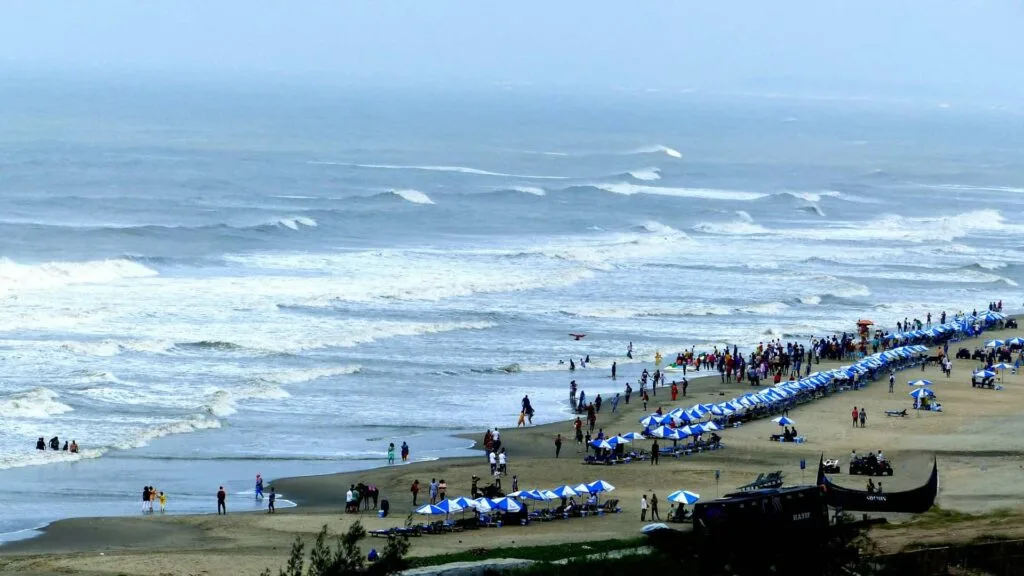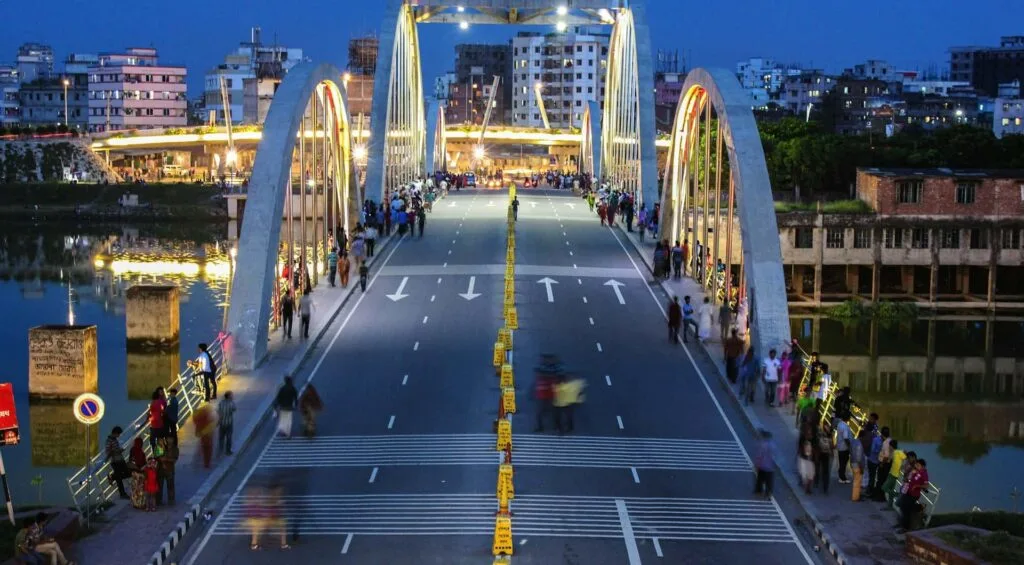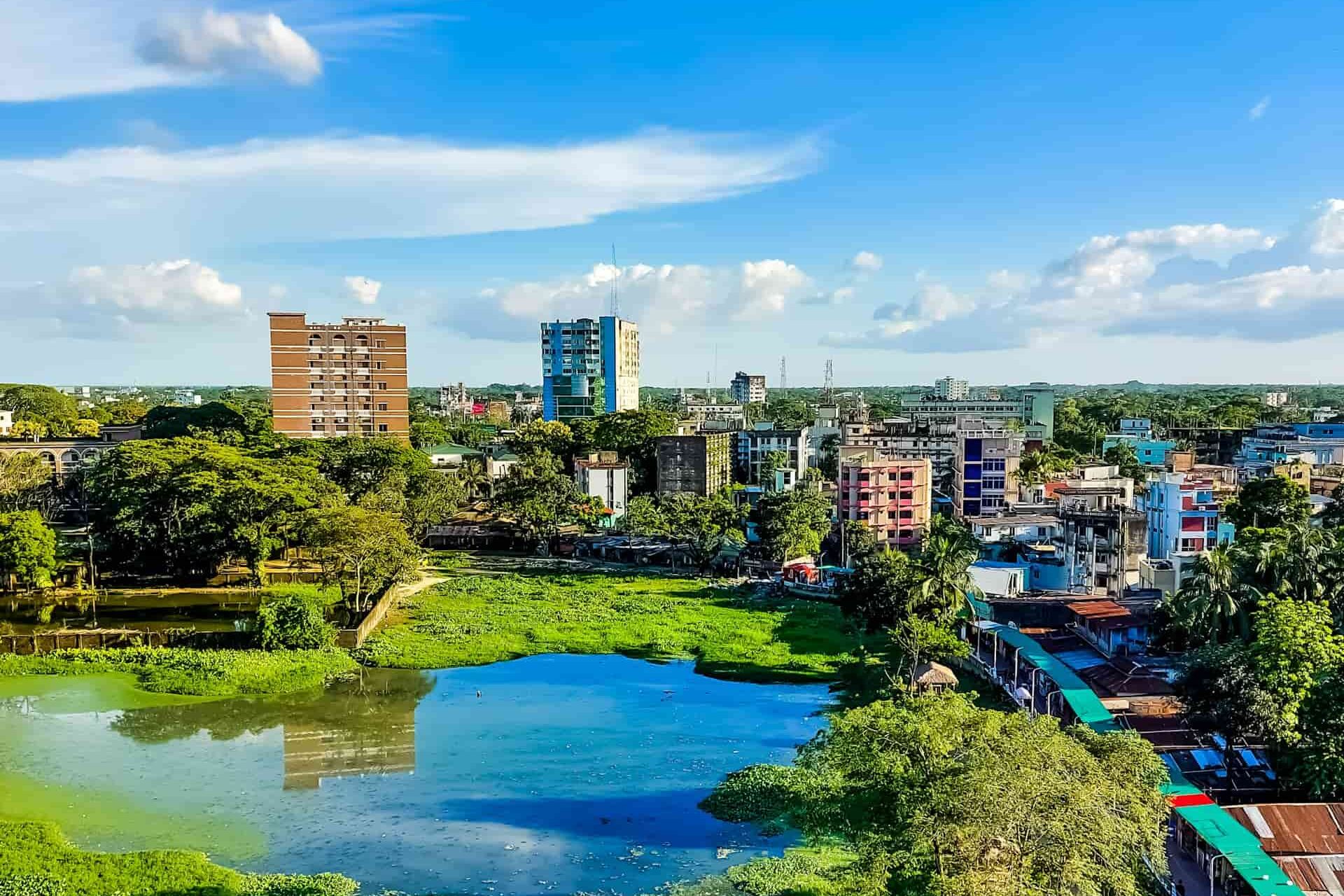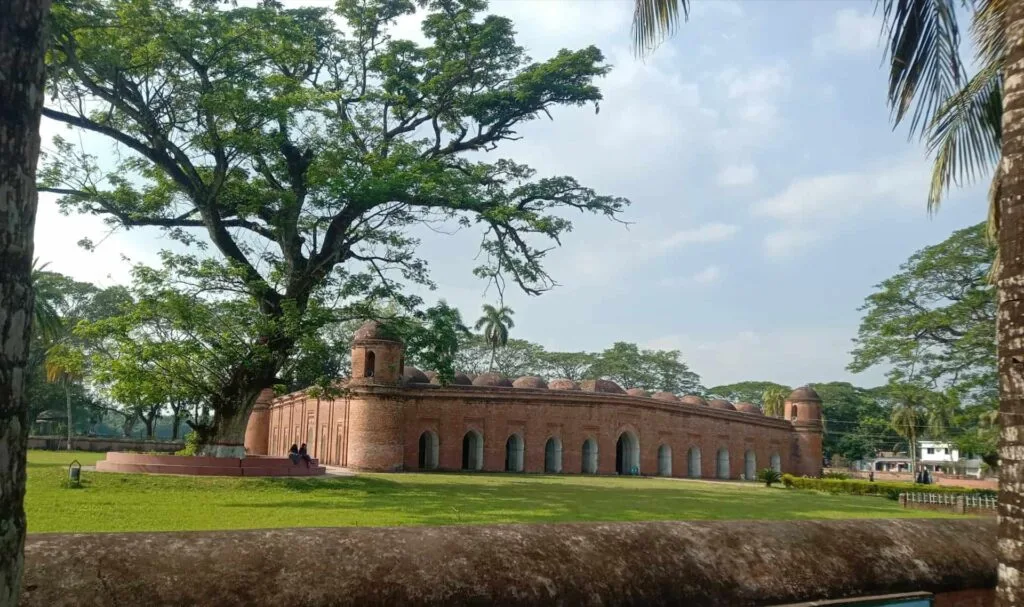Table of Contents
Introduction
Places to Visit in Bangladesh, A land where emerald rice paddies meet winding rivers and ancient history blends with vibrant cultural traditions, remains one of South Asia’s most underrated travel destinations. Just a stone’s throw away from India, this neighboring gem offers Indian travelers an accessible yet refreshingly different experience without the need for long-haul flights or expensive visas. From the world’s longest natural sea beach to mystical mangrove forests teeming with Bengal tigers, Bangladesh packs extraordinary diversity into its compact borders.
Whether you’re seeking spiritual enlightenment, architectural wonders, or simply a taste of warm Bengali hospitality, these must-visit places in Bangladesh will transform your perception of this often-overlooked country. Let’s embark on a journey through Bangladesh’s most captivating destinations that deserve a spot on every Indian traveler’s bucket list.
Top Places to Visit in Bangladesh
1. Cox’s Bazar – The World’s Longest Natural Sea Beach

Cox’s Bazar is a beach paradise that offers more than just scenic beauty. From the buzzing main beach to the peaceful hidden shores, there’s something for everyone. Visitors can enjoy fresh seafood, shop local crafts, or simply relax by the waves. Adventure activities like surfing and parasailing add thrill to the trip. With nearby spots like Himchari and Inani Beach, the experience becomes even more memorable.
Best Time to Visit
The best time to explore Cox’s Bazar is from November to March. The weather is cool and pleasant, with clear skies—perfect for beach fun and sightseeing.
Don’t Miss
Make sure to catch the sunset at Laboni Point. As the sun sets over the Bay of Bengal, the sky lights up with beautiful colors—it’s truly a magical moment.
2. Dhaka – The Vibrant Capital City

Dhaka, Bangladesh’s pulsating capital, offers fascinating contrasts where centuries-old monuments stand alongside modern skyscrapers. Old Dhaka’s narrow winding lanes, historic architecture like the pink-hued Ahsan Manzil and Lalbagh Fort, combined with modern shopping districts in Gulshan and Banani, create a captivating urban experience that rewards exploration.
Best time to visit: November to February when the weather is cooler and more comfortable.
Don’t miss: A boat ride on the Buriganga River provides a unique perspective of riverside life and the city’s skyline.
3. Sylhet – Land of Tea Gardens and Waterfalls

Sylhet presents a refreshing contrast to Bangladesh’s predominantly flat terrain with rolling hills covered in lush tea plantations, misty valleys, and numerous waterfalls. Beyond the mesmerizing emerald-green landscape of tea estates, natural beauty spots like Ratargul Swamp Forest and Bisnakandi offer crystal-clear rivers flowing over stone beds against breathtaking mountain backdrops.
Best time to visit: Year-round, though June to September offers the most dramatic waterfall views when they’re in full flow.
Don’t miss: Visit Jaflong, where the transparent water of the Dauki River flows from India, and local people mine stones from the riverbed.
4. Srimangal – The Tea Capital of Bangladesh

Often called the “Tea Capital of Bangladesh,” Srimangal is surrounded by over 150 tea estates producing some of the world’s finest tea, including the famous seven-layer tea. The small, peaceful town also offers nature enthusiasts Lawachara National Park with endangered hoolock gibbons and scenic Madhabpur Lake, creating a perfect blend of culinary and natural attractions.
Best time to visit: October to March offers pleasant weather for outdoor exploration.
Don’t miss: A visit to Nilkantha Tea Cabin to sample the renowned seven-layer tea, a visual and gustatory delight found nowhere else in the world.
5. Rangamati – Lake Paradise

Nestled in the Chittagong Hill Tracts, Rangamati centers around massive Kaptai Lake with emerald waters dotted with islands and surrounded by forested hills. The area is home to various indigenous tribal communities who maintain distinct cultures and traditions, creating a fascinating cultural landscape alongside natural beauty.
Best time to visit: October to March, avoiding the heavy monsoon months.
Don’t miss: Visit the tribal markets where indigenous crafts and textiles showcase remarkable artistry and cultural heritage.
6. Saint Martin’s Island – The Coral Island
Bangladesh’s only coral island, Saint Martin’s is a small paradise in the Bay of Bengal featuring crystal-clear waters, coral reefs, and beaches lined with coconut palms. The laid-back atmosphere offers simple pleasures – freshly caught seafood, snorkeling among colorful fish, and exceptional stargazing opportunities under limited electricity.
Best time to visit: November to February when the seas are calm and the weather is pleasant.
Don’t miss: Walk across to Chera Dwip (Broken Island), a small adjacent island accessible during low tide, for an even more secluded experience.
7. Bagerhat – Historic Mosque City

Bagerhat, a UNESCO World Heritage Site known as the “Historic Mosque City,” contains remarkable Islamic architecture from the 15th century. The imposing Sixty Dome Mosque with its symmetrical design of 77 domes, alongside other structures like the Nine Dome Mosque and Khan Jahan Ali’s Tomb, showcase the unique blend of Arab, Persian, and Bengali architectural styles.
Best time to visit: October to March for comfortable temperatures.
Don’t miss: The mysterious Ghor Kuta, a stone tomb said to have healing powers, where pilgrims tie threads to ask for blessings.
8. Bandarban – The Roof of Bangladesh

For adventure seekers, Bandarban offers Bangladesh’s most challenging and rewarding trekking destination with some of the country’s highest peaks. Trekking to spots like Nafakhum Waterfall, Buddha Dhatu Jadi, and Nilgiri hills rewards visitors with spectacular vistas, mist-covered mountains, and encounters with diverse tribal communities.
Best time to visit: November to February for clear skies and comfortable hiking conditions.
Don’t miss: The sunrise view from Nilgiri, where you can witness clouds floating below you as the sun paints the sky in brilliant colors.
9. Kuakata – Beach of the Sacred Full Moon View

Kuakata Beach offers the rare natural phenomenon of witnessing both sunrise and sunset over the Bay of Bengal from the same spot. This 30-kilometer-long beach is less developed than Cox’s Bazar, offering tranquility alongside the unique cultural dimension of local Rakhaine tribal communities who maintain their distinct Buddhist traditions.
Best time to visit: December to February for the clearest views and most comfortable temperatures.
Don’t miss: The nearby Fatrar Forest and Gangamati Reserved Forest offer opportunities to spot migratory birds and experience mangrove ecosystems.
10. Sonargaon – Medieval Capital

Once the medieval capital of Bengal, Sonargaon’s main attraction is Panam City, an abandoned street lined with elegant colonial-era buildings that once housed wealthy Hindu merchants. The Folk Art Museum housed in the magnificent Sardar Bari mansion, alongside the surrounding rural landscape with peaceful villages and palm-fringed ponds, creates a timelessly charming atmosphere.
Best time to visit: October to March for comfortable sightseeing weather.
Don’t miss: The colorful hand-painted rickshaws and boats that exemplify traditional Bengali folk art.
Practical Information for Indian Travelers
Visa and Entry
Indian citizens can obtain a visa on arrival in Bangladesh for up to 30 days. Alternatively, applying for an e-visa before travel is recommended to save time at the border. Tourist visas typically cost around $50 USD.
Transportation
Within Bangladesh, transportation options include:
- Domestic flights connecting major cities
- Intercity buses (including air-conditioned services)
- Railways (though slower than buses)
- Water transportation (particularly useful for reaching the Sundarbans or Saint Martin’s Island)
- Rickshaws and auto-rickshaws for local transportation
Currency
The Bangladeshi Taka (BDT) is the local currency. While major hotels and restaurants in urban areas may accept credit cards, having cash on hand is essential, especially when traveling to rural areas or smaller towns.
Language
Bengali is the official language. English is understood in tourist areas and hotels but less common in rural regions. Indians who speak Bengali will find communication easy; others might need translation apps or basic Bengali phrases.
Connectivity
Indian mobile phones typically work in Bangladesh with international roaming. Alternatively, purchasing a local SIM card is affordable and convenient for staying connected.
Frequently Asked Questions
1. What is the best time to visit Bangladesh?
The best time to visit Bangladesh is between November and March, when the weather is cooler and more comfortable for travel.
2. Is Cox’s Bazar really the longest beach in the world?
Yes, Cox’s Bazar is considered the longest natural sandy sea beach in the world, stretching over 120 km.
3. Are there any UNESCO World Heritage Sites in Bangladesh?
Yes, the Sundarbans Mangrove Forest and the Historic Mosque City of Bagerhat are both UNESCO World Heritage Sites in Bangladesh.
4. Is it safe for tourists to travel in Bangladesh?
Yes, Bangladesh is generally safe for tourists. Like any country, it’s wise to take standard precautions and stay informed on local guidelines.
5. What are some must-visit places in Bangladesh?
Some must-visit places include Cox’s Bazar, Sylhet tea gardens, the Sundarbans, Srimangal, Dhaka City, and Bandarban in the Chittagong Hill Tracts.

